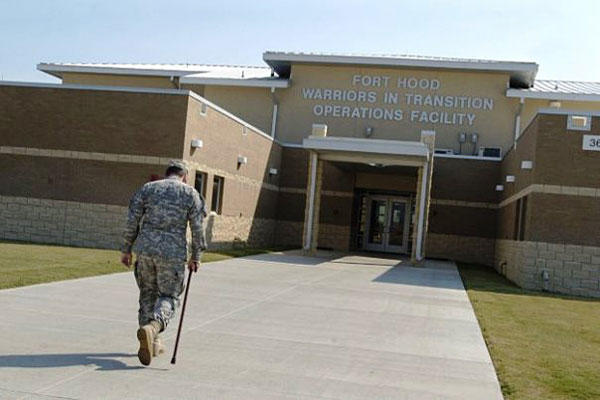The House Armed Services Committee has ordered up a sweeping investigation of allegations of mistreatment and the quality of care at Army Warrior Transition Units (WTUs) designed to return wounded, ill and injured troops to duty or prepare them for civilian life.
The House Subcommittee on Military Personnel also called on the Government Accountability Office (GAO) to gauge the long-term viability of the WTUs, given the decline in the numbers of wounded troops in recent years as the wars in Iraq and Afghanistan have wound down.
In the markup to the Fiscal Year 2016 National Defense Authorization Act, the subcommittee expressed concern "about allegations of mistreatment over the past year in some Army Warrior Transition Units."
The GAO was directed to evaluate "whether there are systemic mistreatment issues in the Army WTUs, as well as the Army's plan to maintain the Warrior Transition Units capability with fewer soldiers and resources." The House asked for the GAO's report by March 2016.
The Army has pushed back against the suggestion that allegations of harassment and disrespect by WTU staff indicated a pattern of abuse or systemic mistreatment, arguing that complaints along those lines were isolated incidents.
In a recent roundtable session with reporters at the Pentagon, Col. Chris Toner, head of the Army's Warrior Transition Command, said "I treat all these allegations seriously." He said he had a "zero tolerance" policy for disrespect and mistreatment by staff and whenever an allegation was made, "I immediately engage with that chain of command."
Toner also said that the training program for staff at the WTUs had been re-designed and the criteria for selecting staff had been upgraded.
At the height of the wars in Iraq and Afghanistan, the WTUs were serving more than 12,700 troops. Toner said the current total was 3,654, and he expected a continuing population of about 3,000.
Currently, the Army has a fact-finding investigation under Army regulation 15-6 into allegations of mistreatment at the Fort Hood, Tex., WTU.
Last year, a similar 15-6 investigation at Fort Carson, Colo., resulted in Army Surgeon General Patricia Horoho ordering a stand down at Fort Carson's Evans Army Community Hospital to "address issues of professionalism in the workplace" and "dignity and respect during patient encounters."
The 15-6 investigation at Fort Carson, conducted by Army Brig. Gen. John Sullivan, the Army's Chief of Transportation, also found allegations of a "litigious environment" surrounding warrior care at the base.
Sullivan's report found allegations that soldiers were concerned about being "chaptered out" without benefits for misconduct, while the staff sought to protect themselves against counter-charges and the possibility of eventual lawsuits.
In its directions to the GAO, the Military Personnel Subcommittee also called for the investigation to look into "the current system to respond to and address complaints by wounded warriors in Warrior Transition Units and whether the system is effective and fair."
In addition, the GAO was asked to investigate "the process for selecting commanders and cadre assigned to the Warrior Transition Units and how involved the Surgeon General of the Army and the installation commanders are in the process."
The call for the GAO investigation came as the Army planned to close 10 of its 25 WTUs because of the declining population of wounded, ill and injured troops.
The WTUs scheduled for inactivation by August 2016 are at Fort Gordon, Ga.; Fort Knox, Ky.; Joint Base Langley-Eustis, Va.; Fort Leonard Wood, Mo.; Fort Sill, Okla.; Fort Polk, La.; Fort Wainwright, Alaska; Joint Base Elmendorf-Richardson, Alaska; Fort Meade, Md.; and Naval Medical Center, San Diego.
-- Richard Sisk can be reached at richard.sisk@military.com































